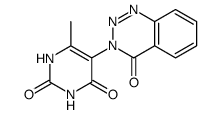Enantioselective separation and degradation of the herbicide dichlorprop methyl in sediment.
Yun Ma, Chao Xu, Yuezhong Wen, Weiping Liu
Index: Chirality 21(4) , 480-3, (2009)
Full Text: HTML
Abstract
Chiral pesticides currently constitute about 50% of all pesticides dosage used in China, and this ratio is increasing as more complex structures are introduced. Dichlorprop methyl (DCPPM) is a chiral herbicide consisting of a pair of enantiomers. In this study, the enantiomeric separation of DCPPM was investigated by gas chromatography (GC) and high-performance liquid chromatography (HPLC) using chiral stationary phases (CSPs), and its enantiomeric degradation was characterized using a DCPPM-degrading bacterial strain isolated from an activated sludge from a textile-printing wastewater treatment plant. Baseline separation by both GC and HPLC was achieved. Incubation with DCPPM-degrading bacteria in different pH solutions showed that the R enantiomer was preferentially degraded over the S enantiomer of DCPPM. The degradation rate constant decreased with increasing pH in the order of k(pH5) approximately k(pH7) >k(pH9). In comparison, the enantioselectivity as indicated by EF followed the order of pH 7 > pH 9-pH 5.
Related Compounds
| Structure | Name/CAS No. | Molecular Formula | Articles |
|---|---|---|---|
 |
DICHLORPROP-METHYL ESTER
CAS:57153-17-0 |
C12H9N5O3 |
|
Characterization of racemization of chiral pesticides in org...
2010-09-03 [J. Chromatogr. A. 1217(36) , 5718-23, (2010)] |
|
Influence of environmental changes on degradation of chiral ...
1999-10-28 [Nature 401(6756) , 898-901, (1999)] |
|
[Enantioselective degradation of 2, 4-dichlorprop methyl est...
2005-07-01 [Huan Jing Ke Xue 26(4) , 152-5, (2005)] |
|
Elucidation of the enantioselective enzymatic hydrolysis of ...
2011-03-09 [J. Agric. Food Chem. 59(5) , 1924-30, (2011)] |
|
Enzyme-linked immunosorbent assay by image analysis using a ...
1996-07-15 [Anal. Biochem. 239(1) , 2-7, (1996)] |